
Warsaw Evening Tour (history and pubs) by retro minibus
3 h
Tarde
Confirmación inmediata
Acerca de esta actividad
Itinerary
This is a typical itinerary for this product
Stop At: Palace of Culture and Science, Plac Defilad 1, Warsaw 00-110 Poland
Building and surrounding neighborhood (without entering the building).
The Palace of Culture and Science is the undisputed symbol of Warsaw. The Palace was built in 1952-1955 as a gift from the Soviet Union to the people of Poland.
Varsovians still commonly use nicknames to refer to the Palace, notably "Beijing", "clown", "nightmarish dream of a drunk confectioner", "Stalin's syringe", "small but stylish". Other less common names include "the Elephant in Lacy Underwear", "Russian wedding cake".
Duration: 20 minutes
Stop At: Grzybowski Square, Warsaw Poland
Fragment of former Jewish Ghetto. A view on the Palace of Culture and Science.
Warsaw was divided into many small towns by the end of the 18th century - a jurydyk, whose owners decided about their character. Plac Grzybowski was established as the market of the Grzybów jurydyka in the 17th century, it was one of the first private production and marketing markets, and was located at the hub of the city. On his example, you can study how city squares work when they create a network of interconnectedness.
Duration: 20 minutes
Pass By: Plac Marszalka Jozefa Pilsudskiego, Warsaw Poland
Tomb of the Unknown Soldier.
Marshal Józef Piłsudski Square (formerly Saski Square and Adolf-Hitler-Platz and Victory Square) - monumental, extensive square with symbolic, historical and architectural value.The patron of the square is Marshal Józef Piłsudski (1867-1935), independence activist, head of state, commander-in-chief of the army and marshal of Poland.
Stop At: Praga Polnoc, ul.Zabkowska, Warsaw Poland
Drive around the district and shorts walks.
Praga is one of the oldest districts in Warsaw. Through the centuries, Warsaw's right-bank was an independent town. In 1648 it was granted municipal rights by the king Władysław IV Vasa. It was joined to Warsaw at the end of 18th century. It’s the only district which was not destroyed during WWII.
Duration: 30 minutes
Pass By: PGE National Stadium, ul. aleja Ksiecia Jozefa Poniatowskiego 1, Warsaw 03-901 Poland
Before 2008 on the PGE National Stadium place was the 10th-Anniversary Stadium, opened in 1955. The Stadium until dusk PRL served as the most representative sports facility in the country.
The Stadium was constructed mostly with rubble from buildings destroyed during the Warsaw Uprising of 1944.
In 1983, due to technical problems, the stadium was abandoned. In 1989 the stadium was turned into an outdoor market known as Jarmark Europa, which became Europe's largest open-air market.
Pass By: Palm Tree, Plac de Gaulle, Warsaw 00-001 Poland
Communist Party HQ, Palm Tree.
Central Committee of the Polish United Workers' Party was the central ruling body of the Polish United Workers' Party, the dominant political party in the People's Republic of Poland (1948-1990). After 1989, the Warsaw Stock Exchange entered the former Headquarter of the Polish United Workers' Party. The House of the Party has become the place of the rebirth of Polish capitalism. History once again sneered at the past.
A rumour circulates around Warsaw that the Palm Tree is a gift from the city of Jerusalem for Aleje Jerozolimskie in Warsaw, that in this way Israeli Jews wanted to show Christians Polish how a real Christmas tree looks like.
As the Polish expression ‘hit by a palm tree’ refers to something unthinkable, a behaviour that verges on being silly, even idiotic, the project thus embodies substantial humour and irony, which saves it from linear reading and suggests something that escapes palpable understanding.
Stop At: Klaps (Pawilony), Nowy Swiat 22/28 Pawilon 12/12A, Warsaw 00-373 Poland
Pawilony pubs are optional, since it's a daily selection of pubs
Duration: 20 minutes
Stop At: Plac Konstytucji, plac Konstytucji, Warsaw 00-001 Poland
Socialist Realism.
The Square was constructed in the initial post-war years as the main element of social realist urban project. Together with the Palace of Culture and Science, it was the main architectural social realist investment of Warsaw in 1949-1956. Its name comes from the Stalinist constitution adopted in communist Poland.
Duration: 15 minutes
Leer más
Mostrar menos
This is a typical itinerary for this product
Stop At: Palace of Culture and Science, Plac Defilad 1, Warsaw 00-110 Poland
Building and surrounding neighborhood (without entering the building).
The Palace of Culture and Science is the undisputed symbol of Warsaw. The Palace was built in 1952-1955 as a gift from the Soviet Union to the people of Poland.
Varsovians still commonly use nicknames to refer to the Palace, notably "Beijing", "clown", "nightmarish dream of a drunk confectioner", "Stalin's syringe", "small but stylish". Other less common names include "the Elephant in Lacy Underwear", "Russian wedding cake".
Duration: 20 minutes
Stop At: Grzybowski Square, Warsaw Poland
Fragment of former Jewish Ghetto. A view on the Palace of Culture and Science.
Warsaw was divided into many small towns by the end of the 18th century - a jurydyk, whose owners decided about their character. Plac Grzybowski was established as the market of the Grzybów jurydyka in the 17th century, it was one of the first private production and marketing markets, and was located at the hub of the city. On his example, you can study how city squares work when they create a network of interconnectedness.
Duration: 20 minutes
Pass By: Plac Marszalka Jozefa Pilsudskiego, Warsaw Poland
Tomb of the Unknown Soldier.
Marshal Józef Piłsudski Square (formerly Saski Square and Adolf-Hitler-Platz and Victory Square) - monumental, extensive square with symbolic, historical and architectural value.The patron of the square is Marshal Józef Piłsudski (1867-1935), independence activist, head of state, commander-in-chief of the army and marshal of Poland.
Stop At: Praga Polnoc, ul.Zabkowska, Warsaw Poland
Drive around the district and shorts walks.
Praga is one of the oldest districts in Warsaw. Through the centuries, Warsaw's right-bank was an independent town. In 1648 it was granted municipal rights by the king Władysław IV Vasa. It was joined to Warsaw at the end of 18th century. It’s the only district which was not destroyed during WWII.
Duration: 30 minutes
Pass By: PGE National Stadium, ul. aleja Ksiecia Jozefa Poniatowskiego 1, Warsaw 03-901 Poland
Before 2008 on the PGE National Stadium place was the 10th-Anniversary Stadium, opened in 1955. The Stadium until dusk PRL served as the most representative sports facility in the country.
The Stadium was constructed mostly with rubble from buildings destroyed during the Warsaw Uprising of 1944.
In 1983, due to technical problems, the stadium was abandoned. In 1989 the stadium was turned into an outdoor market known as Jarmark Europa, which became Europe's largest open-air market.
Pass By: Palm Tree, Plac de Gaulle, Warsaw 00-001 Poland
Communist Party HQ, Palm Tree.
Central Committee of the Polish United Workers' Party was the central ruling body of the Polish United Workers' Party, the dominant political party in the People's Republic of Poland (1948-1990). After 1989, the Warsaw Stock Exchange entered the former Headquarter of the Polish United Workers' Party. The House of the Party has become the place of the rebirth of Polish capitalism. History once again sneered at the past.
A rumour circulates around Warsaw that the Palm Tree is a gift from the city of Jerusalem for Aleje Jerozolimskie in Warsaw, that in this way Israeli Jews wanted to show Christians Polish how a real Christmas tree looks like.
As the Polish expression ‘hit by a palm tree’ refers to something unthinkable, a behaviour that verges on being silly, even idiotic, the project thus embodies substantial humour and irony, which saves it from linear reading and suggests something that escapes palpable understanding.
Stop At: Klaps (Pawilony), Nowy Swiat 22/28 Pawilon 12/12A, Warsaw 00-373 Poland
Pawilony pubs are optional, since it's a daily selection of pubs
Duration: 20 minutes
Stop At: Plac Konstytucji, plac Konstytucji, Warsaw 00-001 Poland
Socialist Realism.
The Square was constructed in the initial post-war years as the main element of social realist urban project. Together with the Palace of Culture and Science, it was the main architectural social realist investment of Warsaw in 1949-1956. Its name comes from the Stalinist constitution adopted in communist Poland.
Duration: 15 minutes
Incluido
- Three vodka shots
- Transport in retro Communist era minibus
- Professional English speaking local guide
- Pickup is available up to 1 km / 0.62 mi from the central point - the Palace of Culture and Science.
No incluido
- Additional food and drinks
Adicional
- Confirmation will be received at time of booking
- Minimum age of tour participant is 18 years.
- Not wheelchair accessible
- Near public transportation
- Not recommended for travelers with back problems
- Not recommended for pregnant travelers
- No heart problems or other serious medical conditions
- The minimum number of persons needed to launch the shared tour is 2. A single traveller can join the tour if another booking for at least 2 persons exists.
- If a single reservation is made for 1 to 7 persons they are joined with other travellers, to total 8, which is a capacity of one retro minibus.
- If a single reservation is made for at least 8 persons tour becomes exclusive for that group and no other travellers are added.
- Pickup is available up to 1 km (0.62 mi) from the central point which is Palace of Culture and Science. If your hotel/apartment is located farther our advisor will suggest the closest and most comfortable meeting point.
- Cars are used mainly for transfers between locations where guests have walks with their guide.
- If two minibuses are used on the tour guide will ride in only one during transfers.
- Please contact the Tour Operator if you have food intolerance, allergies or other health issues such as mobility limitations.
- This tour consists of 70% of walk and 30% of the drive.
- Retro minibuses are not equipped with air conditioning, they are equipped with an efficient heating system for wintertime.
- Most travelers can participate
- Some of the retro minibuses are not equipped with seatbelts (which is legal with classic vintage cars).
- This experience requires a minimum number of travelers. If it’s canceled because the minimum isn’t met, you’ll be offered a different date/experience or a full refund
- This tour/activity will have a maximum of 15 travelers
Características
Cultural
75%
Turismo
70%
Vida nocturna
35%
Opiniones
Colecciones
Esta experiencia es parte de estas colecciones
Puede ser que también le guste









 Ver todo 24 Colecciones
Ver todo 24 Colecciones
Haga clic para descubrir otras experiencias
Ver todo
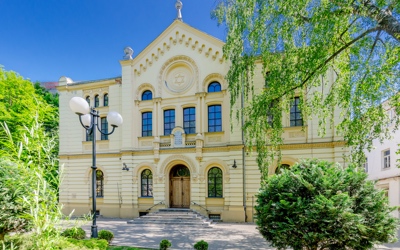
Colecciones
Jewish Heritage
21 Actividades
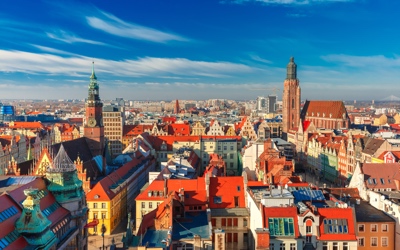
Colecciones
Other Trip
36 Actividades
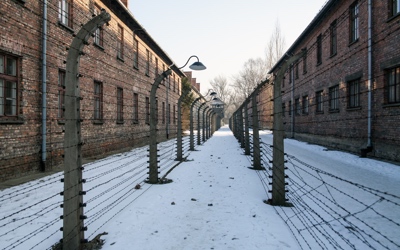
Colecciones
Concentration Camp
16 Actividades
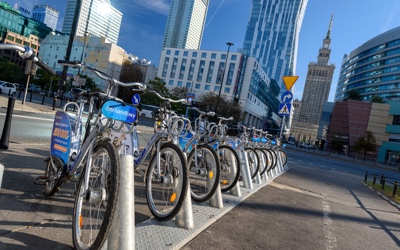
Colecciones
Bike tour
3 Actividades
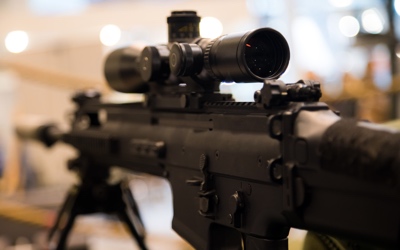
Colecciones
Shooting Course
5 Actividades
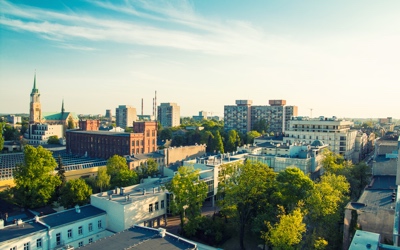
Colecciones
Lodz
4 Actividades
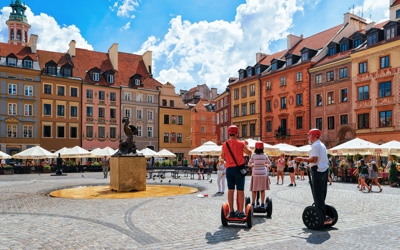
Colecciones
Segway
9 Actividades
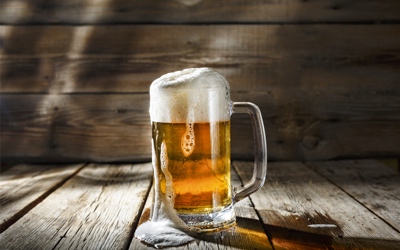
Colecciones
Polish beer
7 Actividades

Colecciones
Vodka
10 Actividades
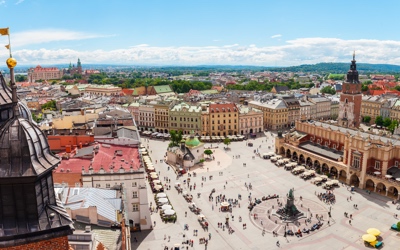
Colecciones
Krakow
17 Actividades


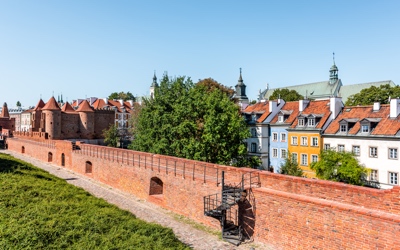

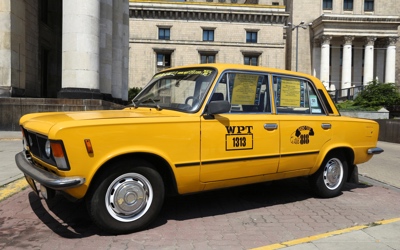

This was Ace fun and the guide was a nice guy. Would recommend, be careful a rival company is mimicking this tour and we met disgruntled tourists who had not been picked up from their scheduled departure point. Good value for money :
This was Ace fun and the guide was a nice guy. Would recommend, be careful a rival company is mimicking this tour and we met disgruntled tourists who had not been picked up from their scheduled departure point. Good value for money :